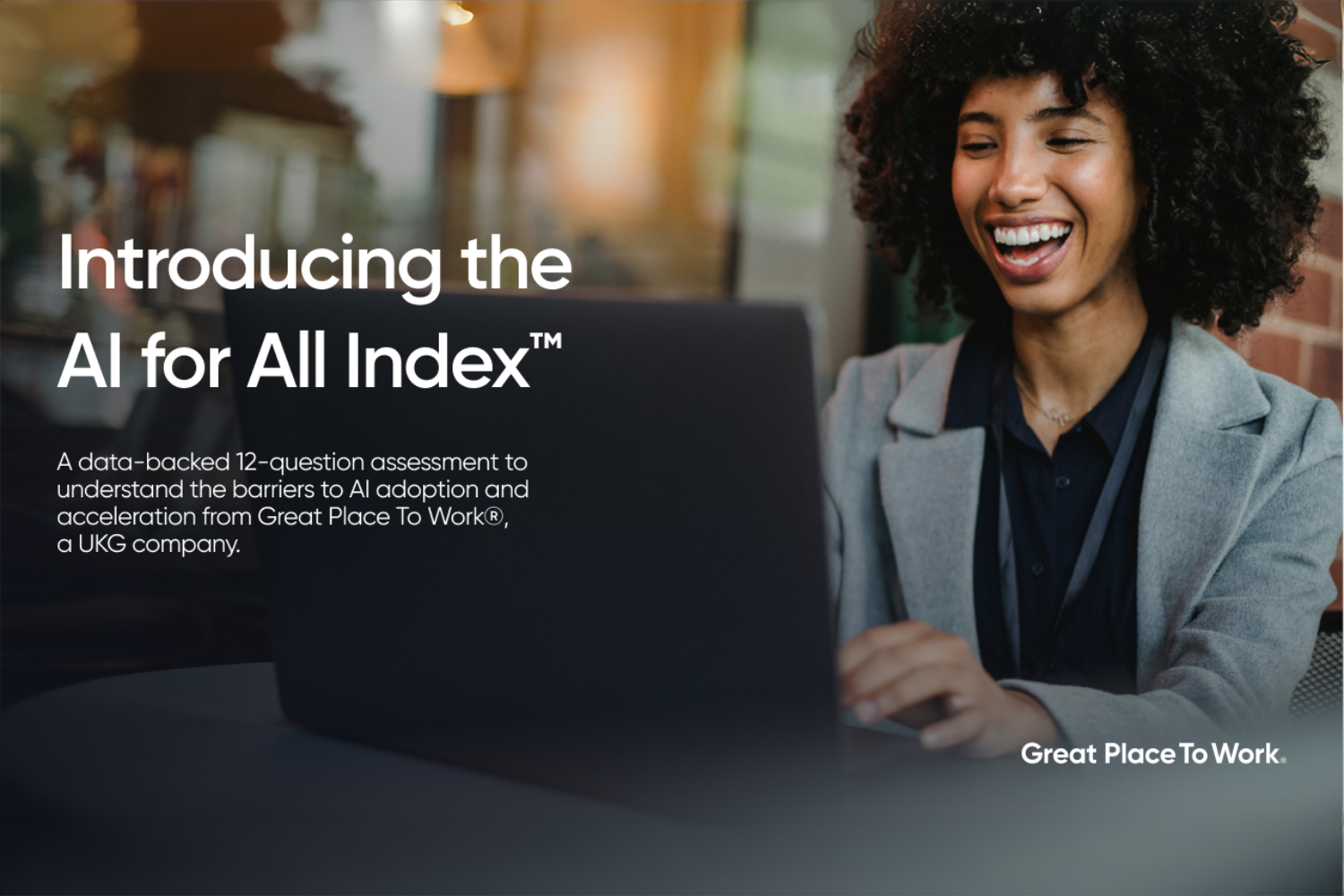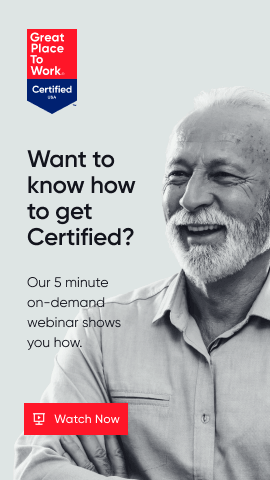The only thing constant is change, both in life and in the workplace. Whether it’s the impact of AI, economic turbulence, or societal shifts, companies must face the daunting challenge of scaling while navigating disruption.
But one critical role for driving success is too often overlooked: workplace culture and how employees experience trust.
Our recent virtual event with cloud and platform company Calix, The Great Place to Work® Effect: Scaling through disruption, brought together thought leaders to discuss actionable leadership strategies for building high-performing environments, even amidst change.
Here are six standout insights from the session, covering trust, leadership, remote-first cultures, and how innovation drives employee engagement and organizational resilience.
1. Culture as a strategic priority
Culture isn’t just a “feel-good” concept, but a tangible advantage that can help differentiate companies in competitive markets.
“Culture is the only thing your competitors can’t copy. There’s no patent to it — no intellectual property rights,” said Parul Kapoor, chief talent and culture officer at Calix. “Products can be replicated, but how you treat each other and how you behave as leaders defines your culture.”
A strong culture is also linked to business outcomes, from higher retention to increased innovation to happier customers, explained Parul.
While culture can sometimes be reduced to company mission statements or even office decor, it is really defined by the daily experiences of employees. Organizations that do not consciously foster environments where trust thrives are vulnerable to losing their competitive edge.
2. Leadership’s role in building trust
Trust is the cornerstone of any organization, particularly during times of disruption. It affects an organization’s agility, strategic growth, and employee morale.
And it starts at the top.
“A high-trust environment is one where employees trust their leaders, who demonstrate credibility, treat them with respect, and communicate consistently,” said Matt Bush, Sr. principal at Great Place To Work.

When priorities shift unexpectedly or mistakes occur, leaders must be willing to step in, reevaluate, and address gaps in alignment.
“Leadership based on trust and transparency also takes courage. It’s key to listen to your people — to understand what their experiences are — and make adjustments where necessary."
— Parul Kapoor, Calix
Transparency, the speakers noted, is the driving force for maintaining trust. Whether an organization is undergoing radical changes or exploring new business models, consistent communication about what is happening (and why) builds confidence among employees.
3. Trust as a universal currency
You can think of trust as “a universal currency” that impacts every facet of business performance, said Matt.
“Creating trust requires establishing leader credibility, setting strategic visions, and communicating how disruption will affect both employees and the organization,” he explained.
Data from the Fortune 100 Best Companies to Work For® shows that high-trust organizations have better employee retention, higher discretionary effort, and stronger financial performance — even during crises. For example, Hilton leaned into employee experience during the COVID pandemic, using it as a competitive advantage that helped the company recover quickly.
In contrast, organizations with trust gaps saw top performers at risk of leaving, further solidifying the correlation between a rich culture of trust and business resilience.
For organizations looking to assess their own trust gaps, the Trust Index™ Survey can help pinpoint specific areas.
For example, poor perception of management effectiveness, communication clarity, and company strategy, particularly among mid-level managers and individual contributors, is often one of the most surprising finds for C-suite executives — a common disconnect that can hinder business performance.
4. Remote-first culture done right
Calix has successfully adopted a remote-first approach, which Parul described as “intentional by design.” She explained that creating effective remote cultures requires resource investment and strategic leadership.
“Remote-first is harder, but leadership drives the environment,” she said. “It’s about trust and transparency.”
Calix has put this principle into action by investing in employees’ tools and resources, such as interactive whiteboarding systems and AI tools like Copilot to enhance collaboration and efficiency.
“We spent millions to enable our engineers and leaders to feel like they’re brainstorming in the same room, even while miles apart."
However, while embracing remote work, Calix also brings leaders together twice annually for in-person gatherings to align on vision, purpose, and leadership strategies. This balance has allowed the organization to maintain agility while scaling rapidly.
Alongside structural measures, Calix prioritizes employee flexibility, empowering staff to manage their time as long as goals are met.
5. How AI is transforming culture
AI is a disruptor. But it is also an opportunity for cultural transformation.
“AI is disrupting jobs faster than we’ve ever seen,” said Matt. “Organizations must address how AI changes day-to-day work while maintaining transparency.”
Calix empowers its employees with AI tools to increase productivity and improve collaboration in their remote-first culture — without compromising trust. This aligns with broader trends discussed during the event, where tech-enabled workplaces were pinpointed as a catalyst for fostering innovation and flexibility.
6. Leadership advice: Listen before acting
Finally, and perhaps most importantly, the first step leaders should take to improve culture is to listen.
“Resist the temptation to just act,” said Matt. “The best leaders start by listening — through surveys, focus groups, or one-on-one interviews — to understand the employee experience.”
By gathering insights, leaders can make informed decisions about which actions will drive the greatest impact. But listening isn’t just about collecting feedback — it’s about being genuinely open to what you hear, even when it challenges your assumptions. The most effective leaders approach conversations with the expectation that new information could change their minds. This intentional, receptive mindset lays the foundation for strong leadership that listens, learns, and grows alongside its employees.
Final Takeaways
Scaling successfully during disruption requires organizations to prioritize culture, trust, and leadership. The speakers underscored that these elements aren’t “nice-to-haves” but necessities for thriving in unpredictable conditions.
“What we call the ‘Great Place to Work Effect’ isn’t about aspirational statements — it’s about the daily experience your employees live,” said Matt.
The proof? Companies with high-trust environments outperform their peers, achieve faster recoveries during crises, and drive long-term business success. The bottom line is clear: Culture and trust are the foundation of organizational resilience.
Is your company looking to innovate, scale, and adapt in the face of disruption? Watch the full session for more insights and actionable takeaways.
Want to get recognized as a Best Workplace?
Think your company has what it takes to rank among the best?








